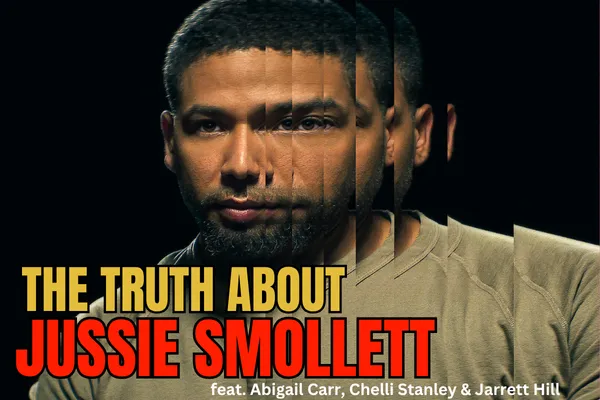
The Truth About Jussie Smollett: What You Missed 🕵️♀️
The Truth About Jussie Smollett: What You Missed 🕵️♀️
Welcome back to "NOW: No Opportunity Wasted," hosted by Angelica Ross. In a recent episode, Angelica dives deep into the Netflix documentary, "The Truth About Jussie Smollett," alongside a panel of powerful voices, including investigative journalist Chelli Stanley, writer Jared Hill, and producer Abigail Carr. Together, they address critical evidence, media narratives, and public misconceptions surrounding the case of Jussie Smollett, a name that has become synonymous with controversy. If you’ve been curious about the facts and fiction behind the headlines, this blog post will break it all down for you. Let’s get into it! 🌟
Revisiting the Case: What Really Happened?
On January 29, 2019, Jussie Smollett reported being attacked in what he claimed was a hate crime. However, the Chicago Police Department (CPD) quickly turned the narrative against him, alleging that he staged the attack. What followed was a media frenzy that painted Jussie as guilty before proven innocent. But the documentary challenges these claims, offering evidence that calls into question the CPD's conclusions.
Angelica Ross and the panel stress the importance of revisiting the case with a fresh, unbiased perspective. "It’s not a crime to want privacy," Angelica reminds us when discussing Jussie’s refusal to turn over his phone—one of the initial actions used to cast doubt on his story. Evidence, not conjecture, should guide public opinion. 📌
The Role of the Chicago Police Department 🚨
The CPD played a central role in the case, and their actions were anything but transparent. Investigative journalist Chelli Stanley uncovered damning details about the officers involved, many of whom had histories of misconduct, including covering up evidence in the infamous Laquan McDonald case. One officer, Richard Hagen, was even linked to the disappearance of critical surveillance footage from a Burger King in the McDonald case. And yet, he was assigned to Jussie's investigation.
Stanley also revealed how the CPD manipulated witnesses and evidence. For example, the Osundairo brothers, initially investigated as suspects, were pressured into making a deal after being threatened with hate crime charges. Their DNA was not found on the rope used in the alleged attack, yet they became key figures in the CPD’s narrative.
"The Chicago Police Department has a long history of corruption," writer Jared Hill points out. "And yet, the public was quick to believe their story over Jussie’s." This raises critical questions about systemic biases and the credibility of law enforcement narratives.
Overlooked Evidence and Witnesses
The documentary highlights two key witnesses: Anthony Moore, a security guard, and Rebecca Bell, a neighbor. Both described seeing a pale-skinned attacker—details that align with Jussie’s account but contradict the CPD’s narrative. Despite their credibility, these witnesses were largely ignored by the media and the CPD.
Even more shocking is the surveillance footage that backs up their claims. The video clearly shows a pale-skinned individual under well-lit conditions, undermining the CPD’s assertion that the Osundairo brothers were the attackers. "Every piece of evidence points to Jussie telling the truth," says Stanley. "The CPD's narrative falls apart when you examine the facts."
Media and Public Perception: The Role of False Narratives
The media played a significant role in shaping public opinion against Jussie. From sensational headlines to late-night comedy skits, the narrative that he staged the attack was perpetuated without substantial evidence. Abigail Carr, the producer behind the Netflix documentary, admits that even she initially believed the headlines. "It wasn’t until I started digging into the case that I realized how much misinformation was out there," she shares.
Jared Hill adds, "False balance is a major issue. The documentary gives airtime to the CPD’s claims, creating a ‘roller coaster of doubt,’ even when the evidence overwhelmingly supports Jussie’s account." This highlights a broader issue in journalism: the prioritization of entertainment over facts.
Lessons for the Future: Why Investigative Journalism Matters 📰
In an era of misinformation and clickbait headlines, the need for thorough investigative journalism has never been greater. The panel agrees that the public must demand accountability, both from law enforcement and the media. "Hang on to facts, no matter what your politics," urges Abigail Carr. "The evidence is there. People just need to look at it."
Final Thoughts: Where Do We Go From Here?
As Angelica Ross concludes, "The things being presented to you aren’t always what they seem." This case is a stark reminder of the importance of critical thinking and the dangers of jumping to conclusions based on incomplete or biased information. For Jussie, the fight for truth continues, but his story also serves as a wake-up call for all of us: question the narrative, demand evidence, and never stop seeking justice.
What are your thoughts on the case and the revelations from the documentary? Let us know in the comments below! And if you haven’t already, watch "The Truth About Jussie Smollett" on Netflix to form your own opinion. 🌟
